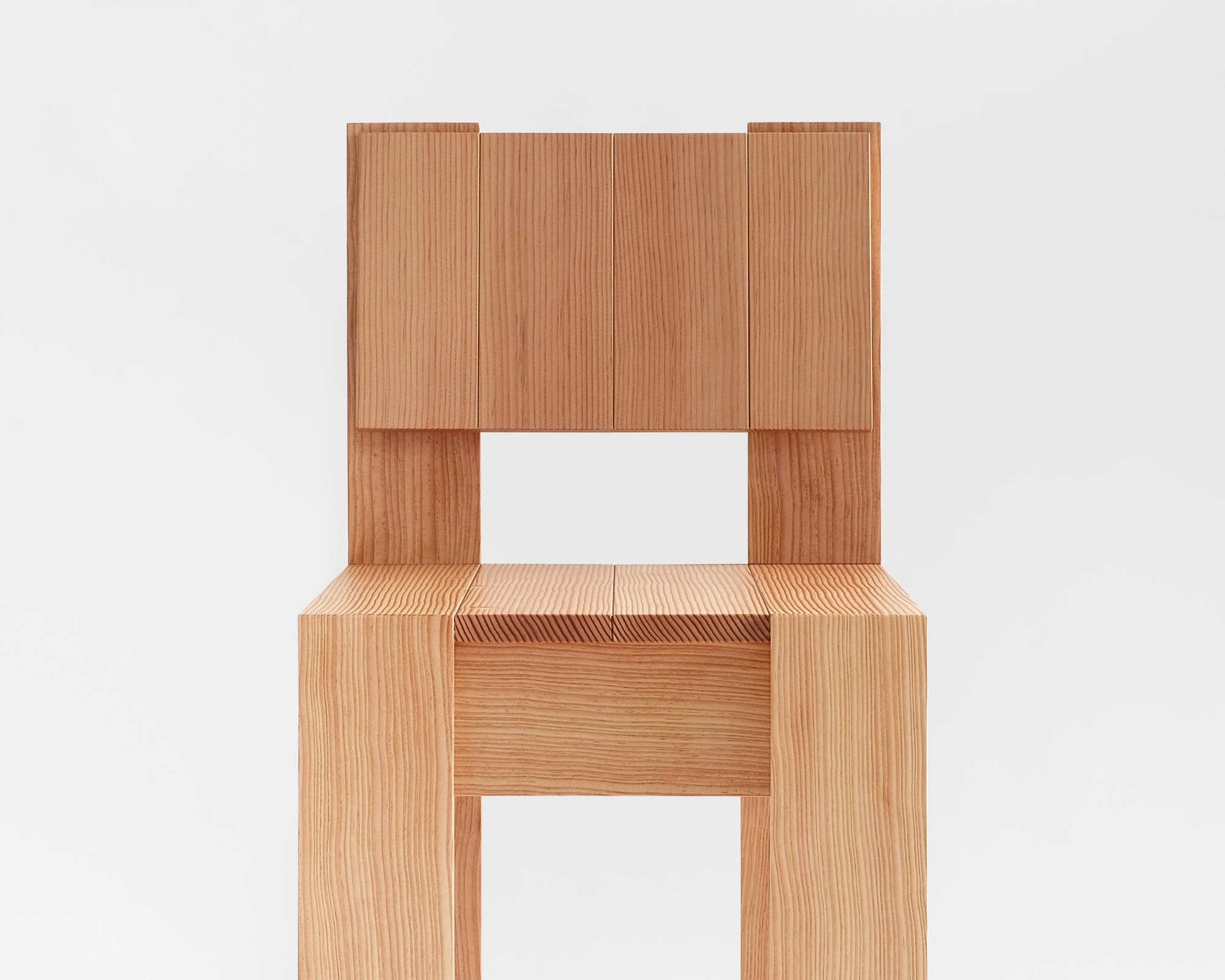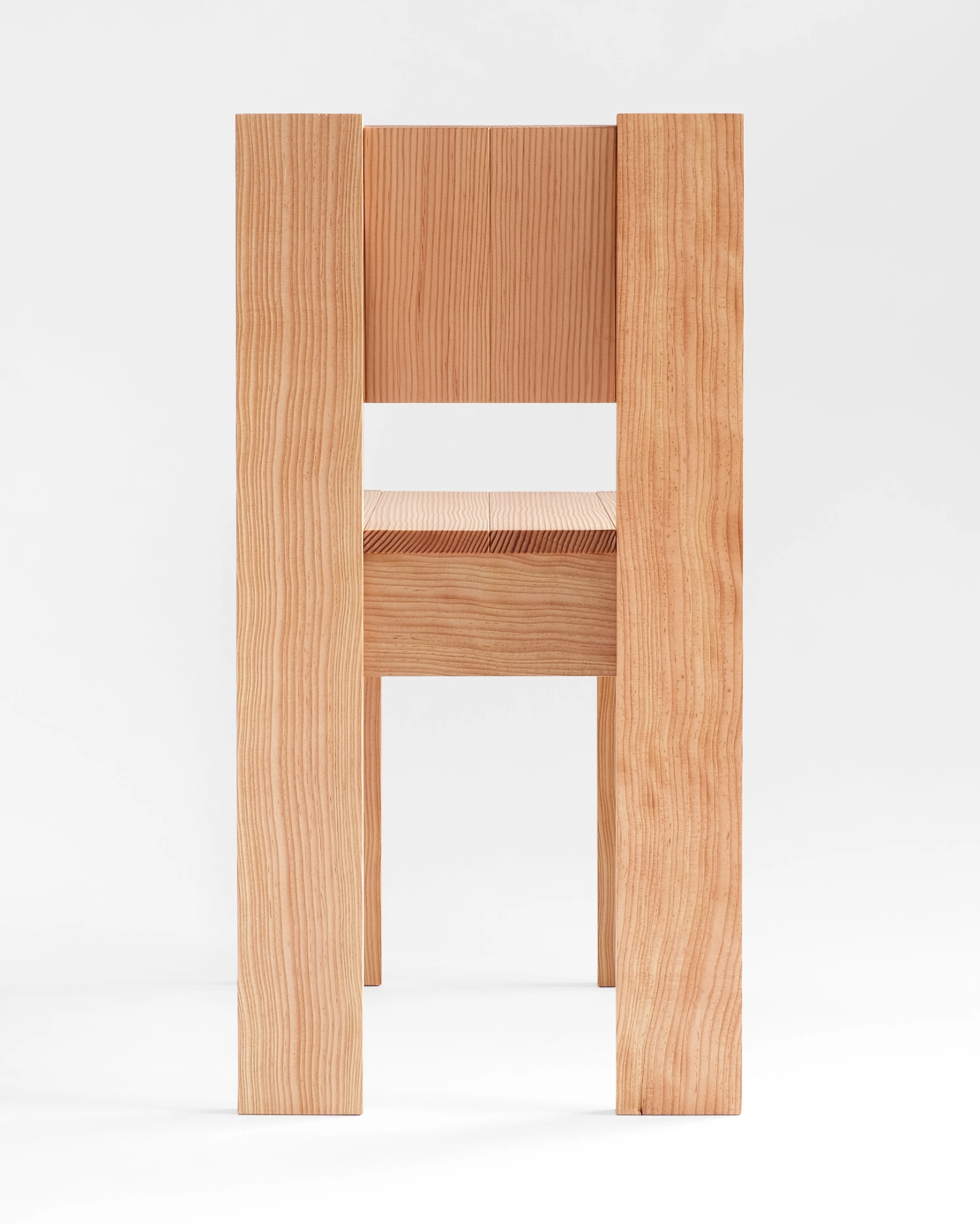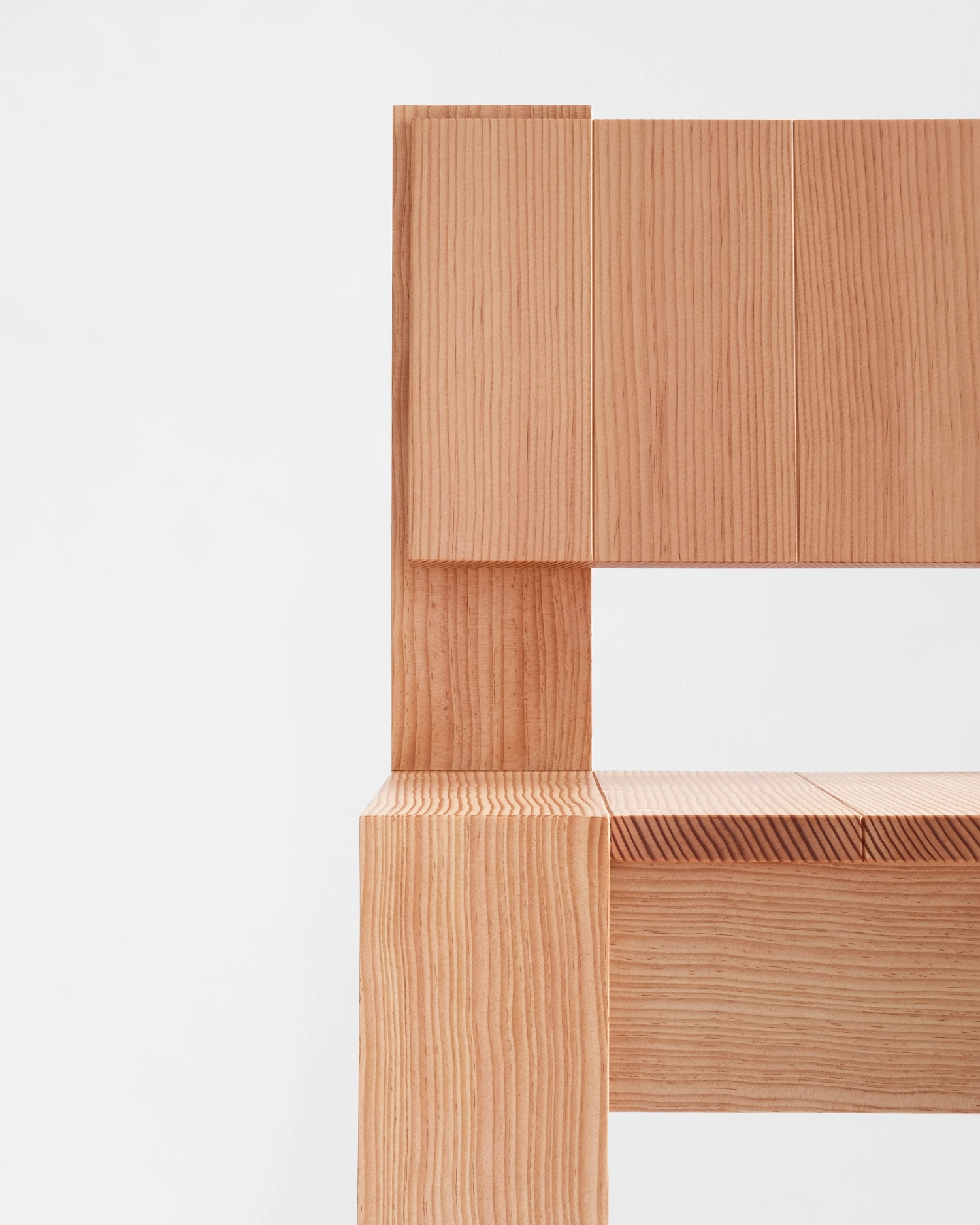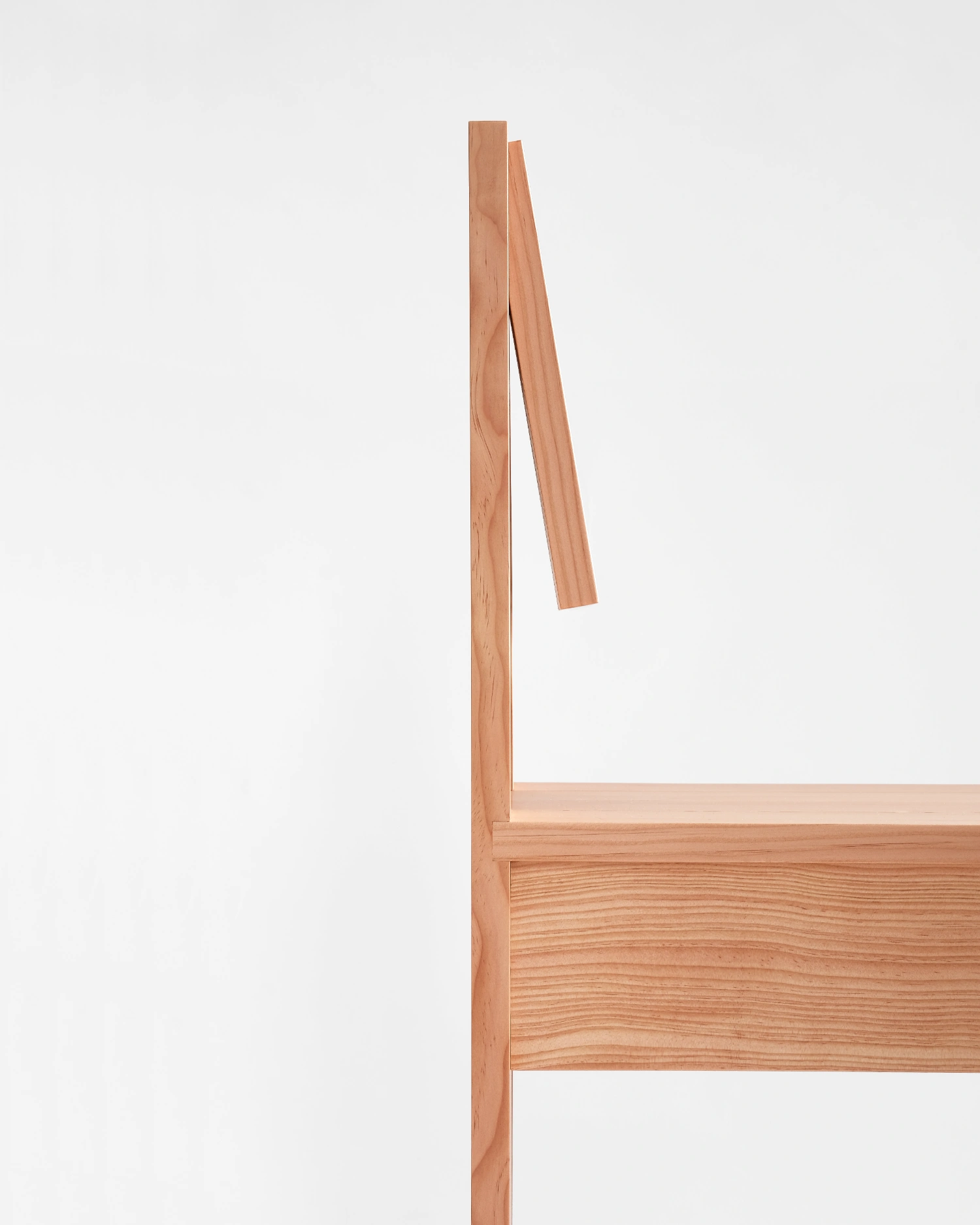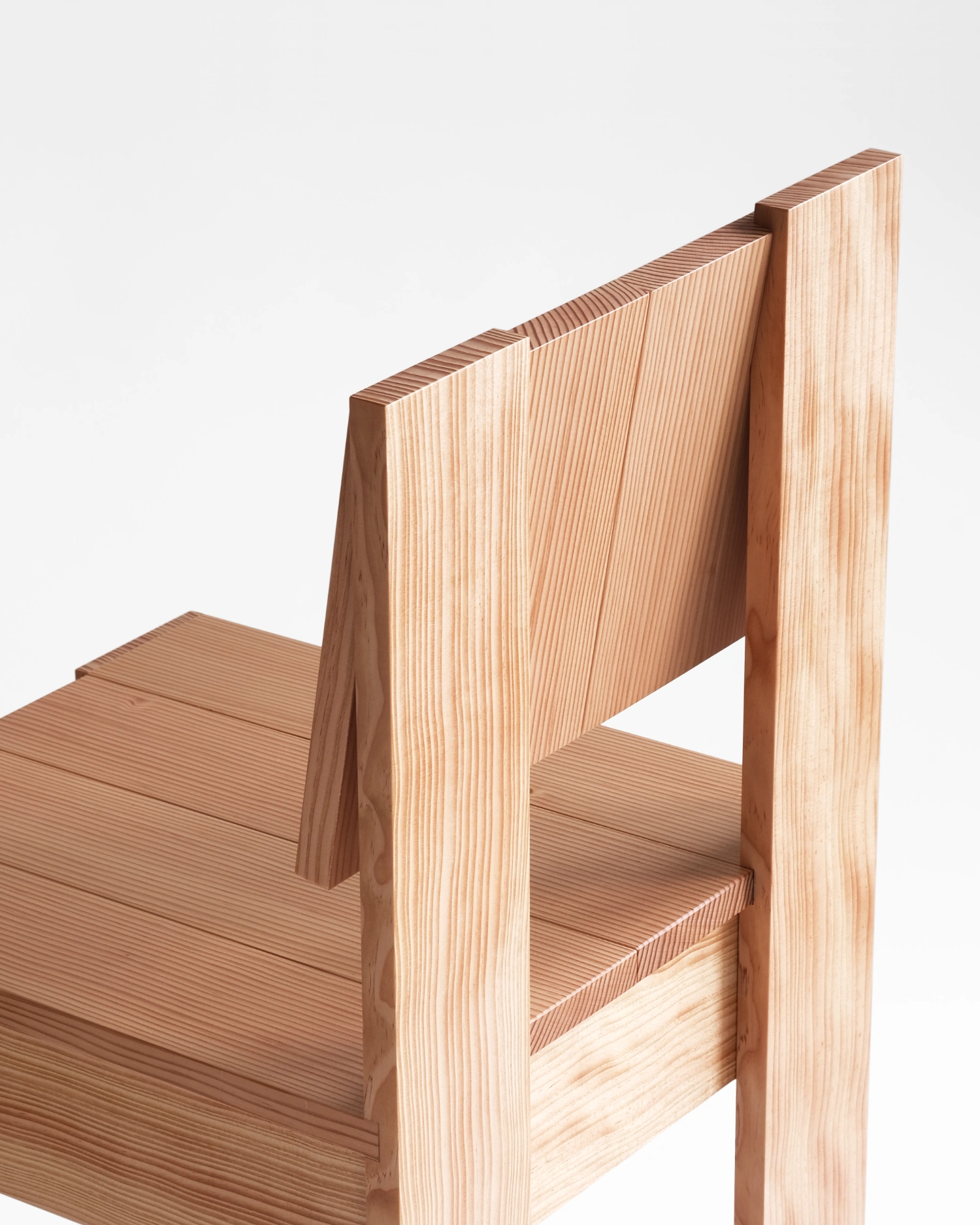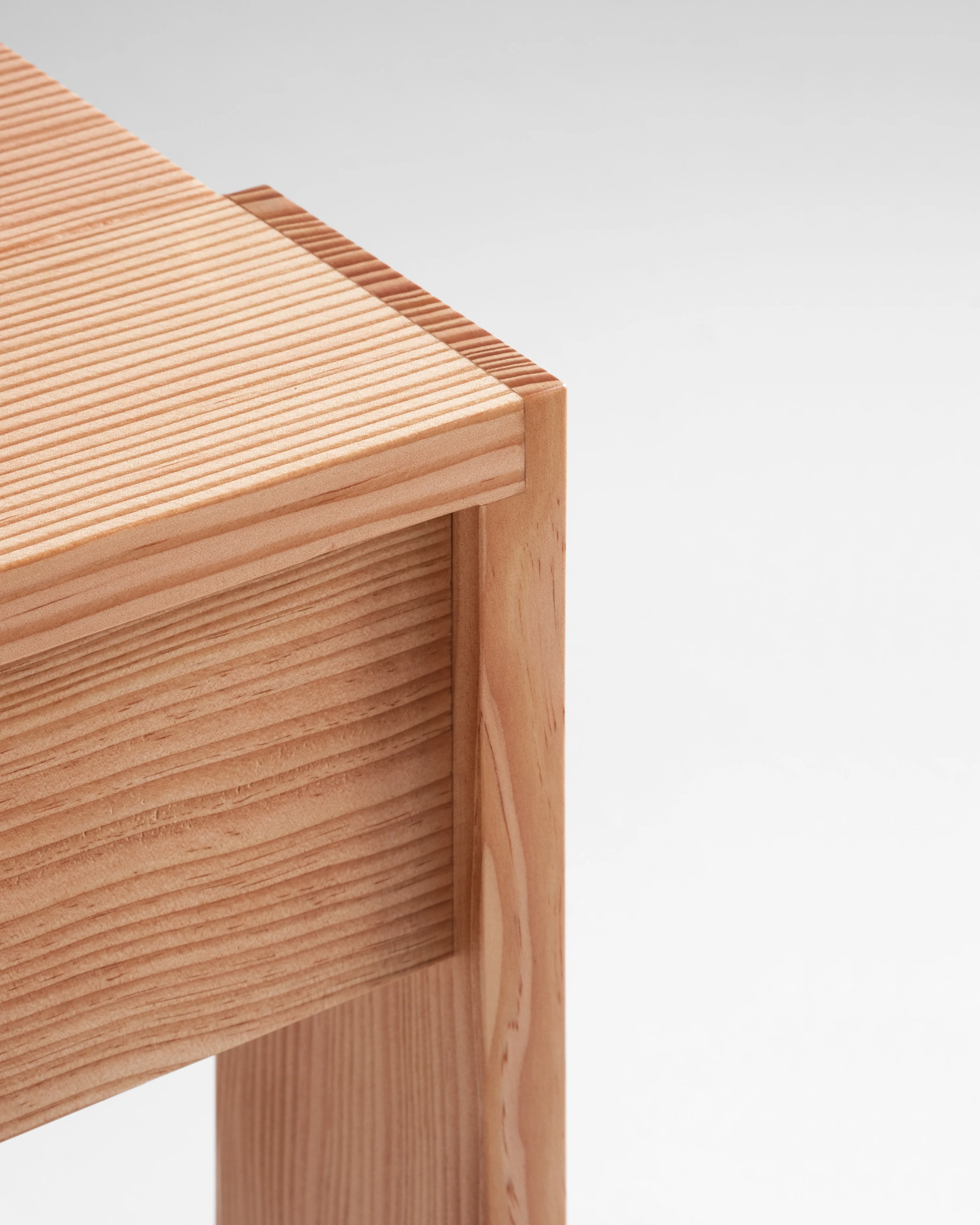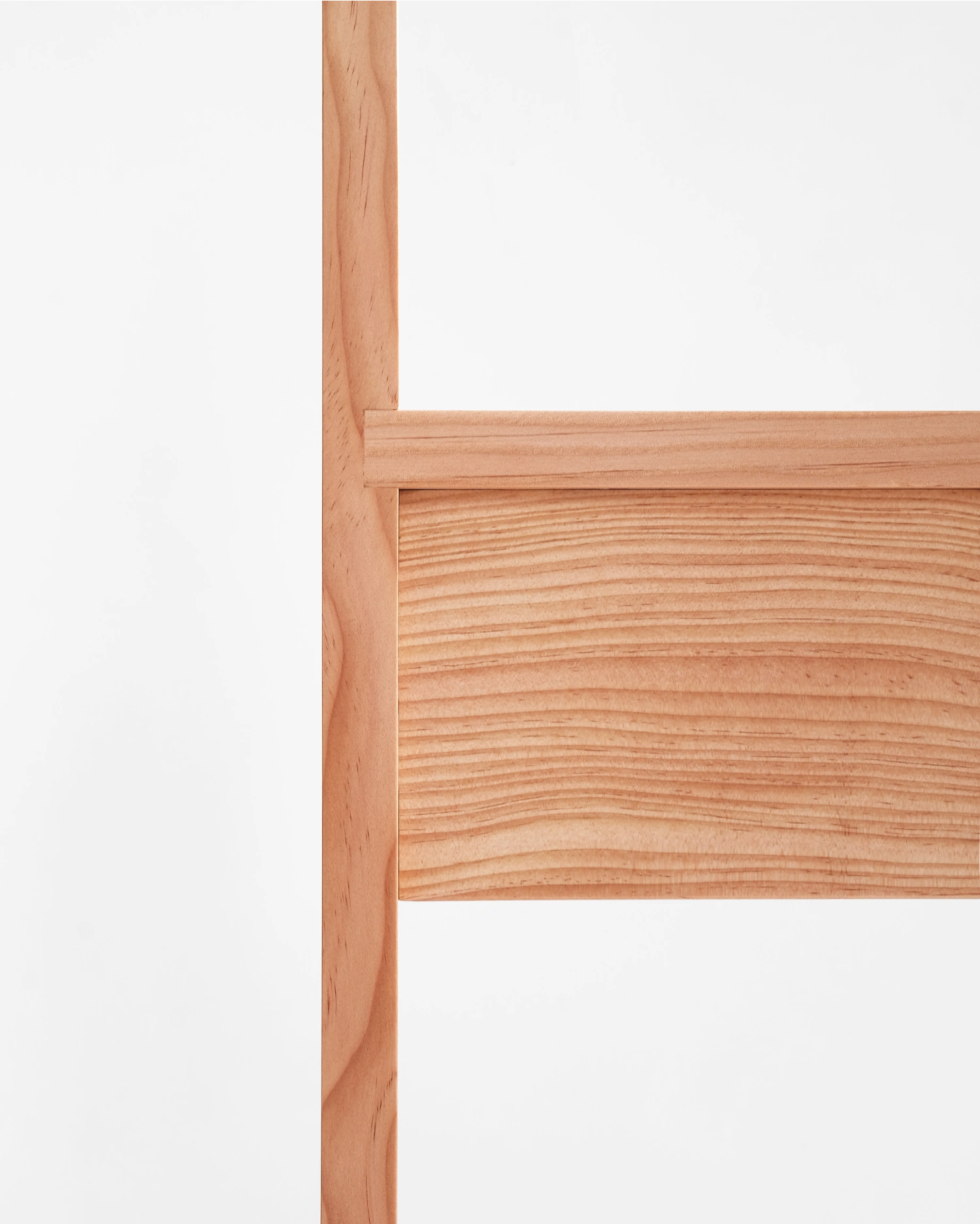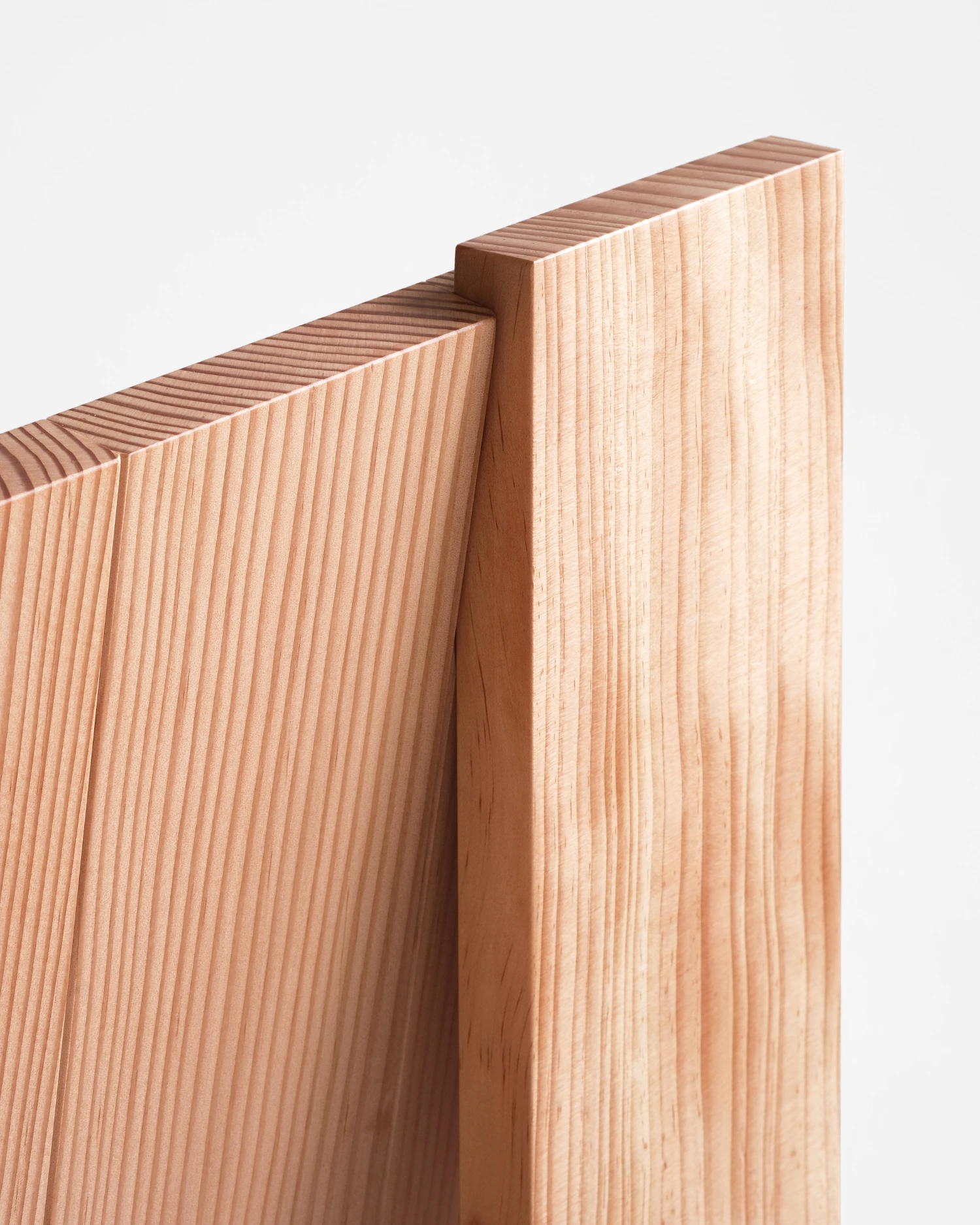Akasaki & Vanhuyse’s Tableau Chair transforms equal-width planks into a balanced composition, merging structure, material clarity, and a subdued expressiveness rooted in the inherent logic of wood.
Tableau Chair reads as a distilled exercise in structure—an object that forgoes decorative gestures in favor of elemental clarity. Formed entirely from equal-width wooden planks, the chair sets up a quiet interplay between horizontal and vertical forces, allowing proportion to become its own form of expression. Its geometry feels intentional without drifting into austerity, as if the designers trusted the material to speak in its own cadence.
In both douglas fir and walnut, the wood’s natural temperament is given space to emerge. Broad planks define seat, legs, and backrest in a single architectural gesture, their grain running in deliberate directions that reinforce the chair’s measured rhythm. The joinery is subtle, almost evasive, ensuring that the piece remains a study in compositional restraint rather than craft showmanship.
The result is a chair that occupies an unusually reflective register. It’s functional, certainly, but it also behaves like a planar experiment—an arrangement of surfaces that hovers between furniture and diagram. This duality is captured precisely in the name Tableau, a term that encompasses both the mathematical logic of a grid and the interpretive potential of an artwork.
As Akasaki & Vanhuyse’s first independently produced piece, the Tableau Chair signals a studio interested in clarity, longevity, and the inherent eloquence of material. It refuses spectacle, opting instead for a kind of grounded precision that feels increasingly rare in contemporary furniture. In its simplicity, it achieves something quietly compelling: a piece that sharpens perception rather than demanding attention.

